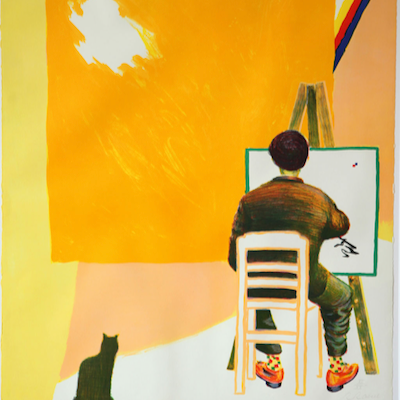His series Bloodlines is his expression of exploring the tangled relationships between private feelings and public life during the Cultural Revolution. It was inspired by his mother, who was a beautiful young woman who later came to suffer from schizophrenia. The series features monochromatic, traditional, yet stylized, portraits of Chinese families which Zhang Xiaogang has embellished with large eyes and large pupils.
« As an artist, the most important feeling is loneliness. So when I say artists need to isolate themselves from society this is what I mean: You have to look for that feeling of loneliness again.»
- Zhang Xiaogang
The subjects are in formal garb and posed to replicate photos common to the decades from 1950 to 1960. He sought to present w
Read More
His series Bloodlines is his expression of exploring the tangled relationships between private feelings and public life during the Cultural Revolution. It was inspired by his mother, who was a beautiful young woman who later came to suffer from schizophrenia. The series features monochromatic, traditional, yet stylized, portraits of Chinese families which Zhang Xiaogang has embellished with large eyes and large pupils.
« As an artist, the most important feeling is loneliness. So when I say artists need to isolate themselves from society this is what I mean: You have to look for that feeling of loneliness again.»
- Zhang Xiaogang
The subjects are in formal garb and posed to replicate photos common to the decades from 1950 to 1960. He sought to present what he called “a particular visual language” often seen in traditional portraiture and re-create “false photographs” which open the truth about the conflict between what is calm externally but turbulent internally. He views the Cultural Revolution as not “historical fact”, but “emotional fiction”. Zhang Xiaogang has been influenced by both Western and Chinese artists. He notes Dali, Picasso, Richter and Paolozzi as strong visual and literary influences. He was trained in formal watercolor techniques and sketching in 1975 by Lin Ling. Zhang Xiaogang was also accepted into the Sichuan Academy of Fine Arts in 1977, studying oil paint based techniques, but within the contexts of Chairman Mao’s Revolutionary Realism. Zhang and his colleagues were the founding artists of the Chinese Avant Garde Movement, which was terminated by the political and social upheaval of Tiananmen Square. Regardless, his works have been exhibited in the United States, Great Britain, Australia, France and Brazil.
Read Less

























